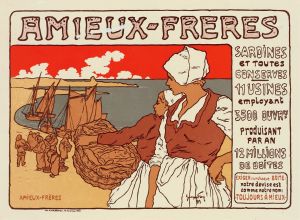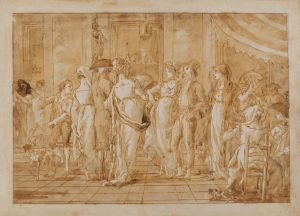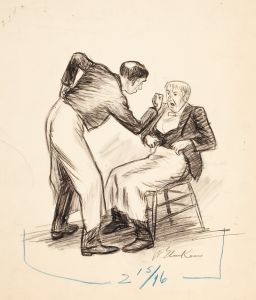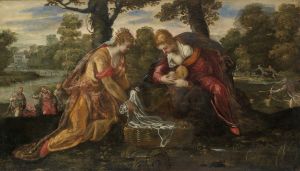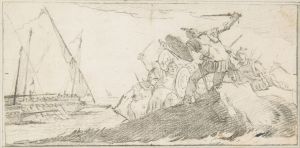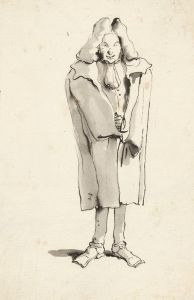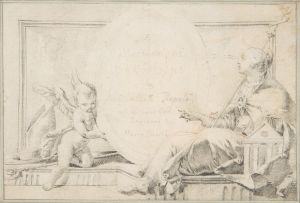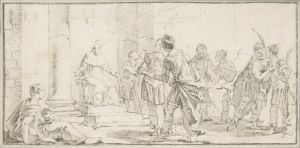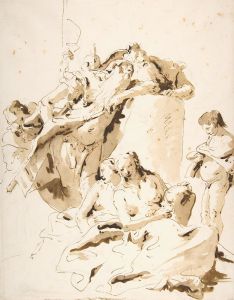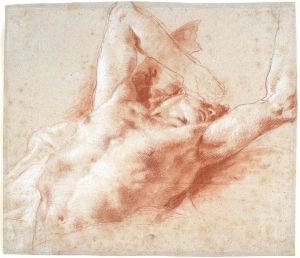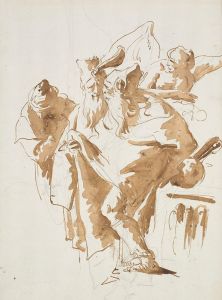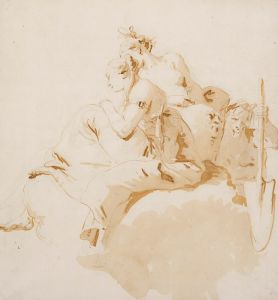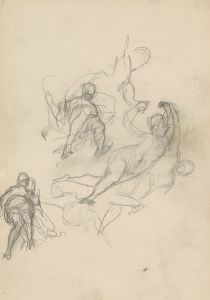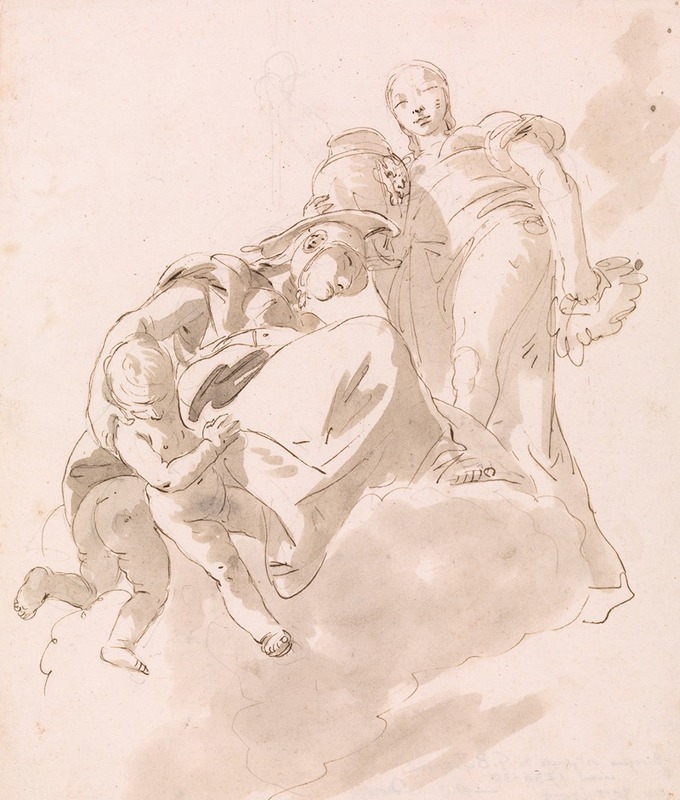
Two Allegorical Figures for a Ceiling
A hand-painted replica of Giovanni Battista Tiepolo’s masterpiece Two Allegorical Figures for a Ceiling, meticulously crafted by professional artists to capture the true essence of the original. Each piece is created with museum-quality canvas and rare mineral pigments, carefully painted by experienced artists with delicate brushstrokes and rich, layered colors to perfectly recreate the texture of the original artwork. Unlike machine-printed reproductions, this hand-painted version brings the painting to life, infused with the artist’s emotions and skill in every stroke. Whether for personal collection or home decoration, it instantly elevates the artistic atmosphere of any space.
Giovanni Battista Tiepolo, an Italian painter and printmaker, is renowned for his grand and luminous frescoes that epitomize the Rococo style. Among his numerous works, "Two Allegorical Figures for a Ceiling" stands out as a testament to his skill in creating allegorical and mythological scenes that are both dynamic and ethereal. Although specific details about this particular painting are scarce, it is reflective of Tiepolo's broader oeuvre and his mastery in ceiling decoration.
Tiepolo was born in Venice in 1696 and became one of the most prominent painters of the 18th century. He was known for his ability to create expansive compositions that adorned the ceilings and walls of palaces, churches, and villas across Europe. His work is characterized by its vibrant color palette, dramatic use of light and shadow, and the fluidity of his figures, which often seem to float effortlessly in space.
"Two Allegorical Figures for a Ceiling" likely features two personifications, a common theme in Tiepolo's work, where abstract concepts such as virtues, vices, or elements of nature are depicted as human figures. This approach was typical of the Rococo period, which favored ornate and decorative art that often included allegorical and mythological subjects. Tiepolo's figures are known for their graceful poses and expressive gestures, which convey a sense of movement and vitality.
The painting would have been designed to be viewed from below, as part of a larger ceiling composition. Tiepolo was adept at creating illusions of depth and perspective, making his figures appear as if they were part of a celestial realm above the viewer. This technique, known as "di sotto in su" (from below upwards), was a hallmark of Baroque and Rococo ceiling painting, and Tiepolo was one of its most accomplished practitioners.
Throughout his career, Tiepolo received numerous commissions from aristocratic and religious patrons. His ability to blend classical themes with contemporary tastes made him a sought-after artist in Italy and beyond. In addition to his work in Venice, Tiepolo's frescoes can be found in cities such as Würzburg, Madrid, and Milan, where he left a lasting impact on the artistic landscape.
While specific information about "Two Allegorical Figures for a Ceiling" is limited, it can be appreciated within the context of Tiepolo's broader body of work. His paintings are celebrated for their technical brilliance and imaginative compositions, which continue to captivate audiences today. Tiepolo's legacy is evident in the way he transformed the spaces he decorated, creating immersive environments that transported viewers to a world of myth and fantasy.
In summary, Giovanni Battista Tiepolo's "Two Allegorical Figures for a Ceiling" exemplifies the artist's expertise in creating allegorical imagery that is both visually stunning and thematically rich. Although detailed information about this specific work is not readily available, it remains an important part of Tiepolo's artistic legacy, showcasing his ability to blend narrative and decoration in a way that defined the Rococo era.






